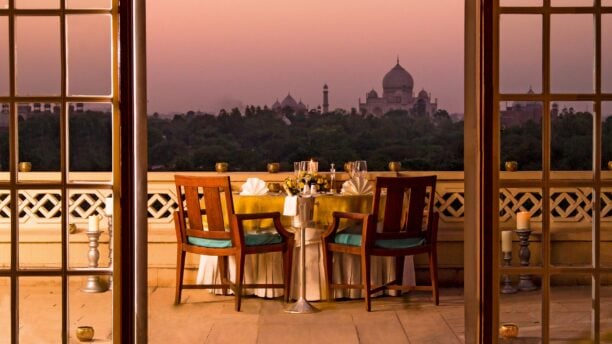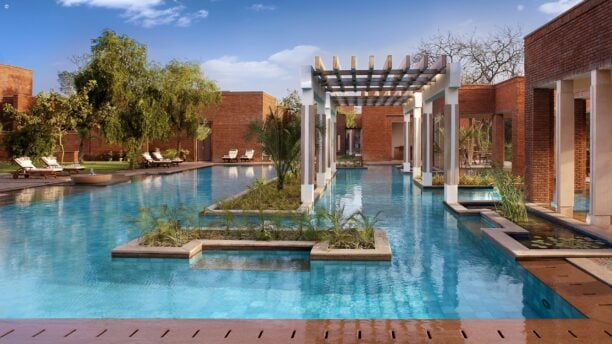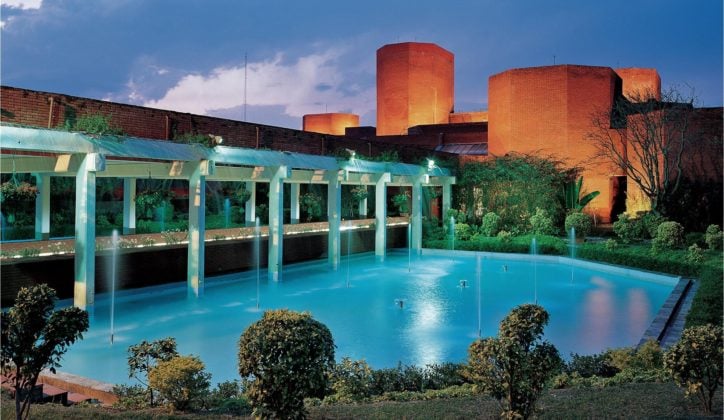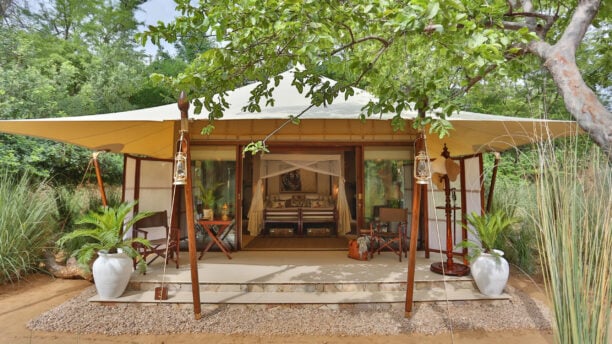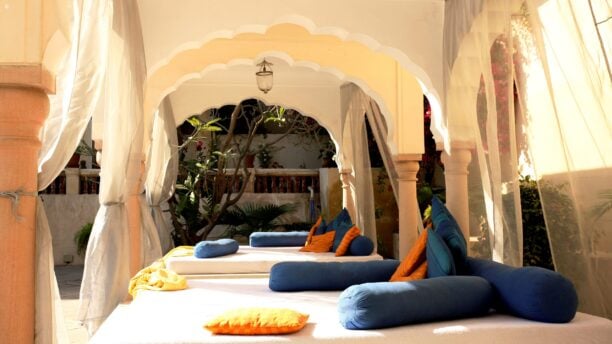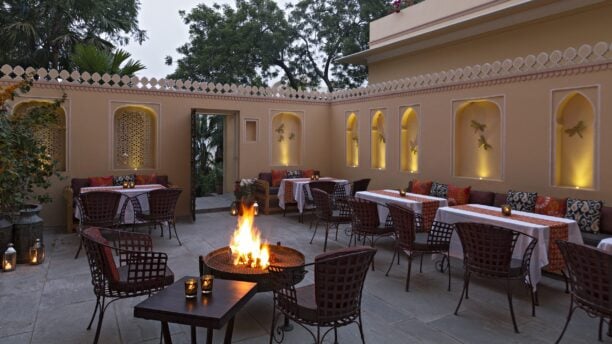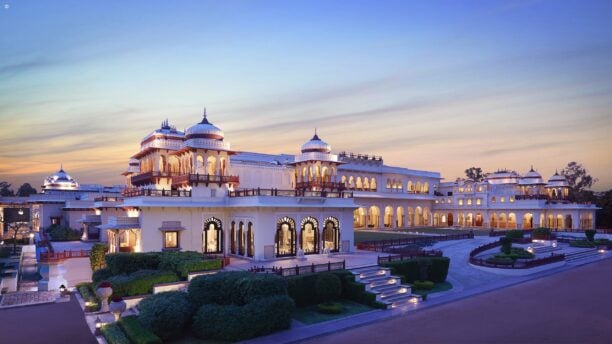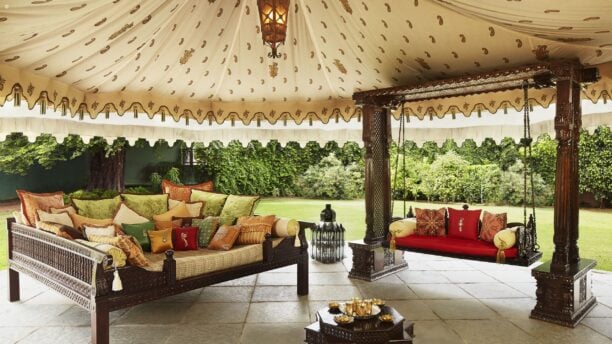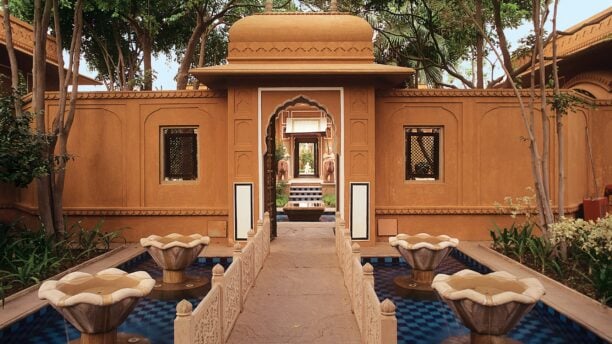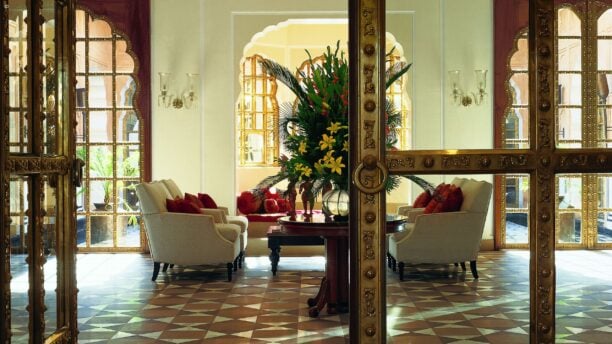- Delhi
- Agra and the Taj Mahal
- Ranthambore
- Dera Amer Camp
- Jaipur
An unforgettable trip that takes in India's bustling cities, peaceful countryside and wildlife
Personalised journeys from start to finish
Every trip helps support Conservation
Every detail taken care of
What's included
-
A private guide accompanying you from arrival to departure
-
Privately guided tours tailored specifically to you
-
Luxury accommodation throughout
-
Private transfers and internal flights
-
Full support from your Travel Concierge before, during and after your trip
-
Private tours in Delhi, Jaipur and Agra
-
Tiger safari in Ranthambore National Park
-
Sunrise tour of the Taj Mahal
-
One night at Dera Amer elephant camp
At a glance
With its colourful markets, vibrant cities and amazing wildlife, India is the perfect destination for an unforgettable family adventure. You’ll be taken care of every step of the way with your own expert guide who will accompany you from the minute you step off the plane until the very end of your trip.
You’ll start by exploring Delhi, India’s vast and fascinating capital. Wind your way through its bustling streets, past rickshaws, bicycles and cows on privately guided tours that offer an insight into the local culture and day-to-day life in the city. You’ll also visit the Gurudwara Bangla Sahib Sikh temple where you’ll have fun making chapattis and stirring the huge pots of dal in the community kitchen.
It’s then on to Agra, home to the beautiful Taj Mahal. You’ll visit the iconic marble mausoleum at sunrise when it is looking its most magical, illuminated by the soft morning light. You’ll also get to explore the surrounding area with a village walk, a wonderful opportunity to get a glimpse into life in rural India.
From Agra you’ll make tracks to Ranthambore in search of its majestic tigers. Driving through the park with your expert guide, all sets of eyes will be on stalks as you look out for pawprints in the ground and flashes of orange between the trees. There are also plenty of sprightly deer, colourful birds and mischievous monkeys to keep you entertained along the way. After a day of exploring, your luxury safari lodge is the perfect place for some quality time together and family dinners under the stars.
The next wildlife encounter is a night at Dera Amer elephant camp where you’ll spend time in the company of these gentle giants. There’s more of the countryside to be explored with a walk through the Aravalli Hills and a visit to the magnificent Amber Fort before you make you way to Jaipur, the final stop.
The capital of Rajasthan, Jaipur is a city full of energy and there’s lots of fun to be had with a block printing workshop and a visit to the Galta Ji temples, frequented by tribes of monkeys who come to splash in the water pools. On your final night you’ll visit Nahargarh Fort and gaze out across the city as the sun sinks behind the horizon.
Example trip itinerary
Delhi
Transfer
Airport assistance at Delhi Airport
Transfer
Private transfer to your hotel with guide
Accommodation in Delhi
Delhi
Overview
With its clean lines, crisp decor and modern take on Moghul architecture, The Lodhi is a cool and contemporary hotel in the heart of New Delhi.
Despite being set within seven acres of grounds, the hotel has just 40 rooms giving it an intimate and exlusive feel. Rooms are elegantly styled in shades of dusky blue, grey and green and come with private balconies and plunge pools. Huge glass windows offer views out across Humayun’s Tomb and the Lodhi Gardens, from which the hotel takes its name.
Sophisticated design touches prevail thoughout, from the light installations and sculptures to the gallery space in the foyer showcasing the work of contemporary Indian artists. The hotel’s restaurant, On the Waterfront, has a real buzz about it, with the ground floor overlooking a reflection pool and a glass pavillion for private parties. The Elan focuses on India’s diverse culinary traditions, and here you can same local delicacies from the north to the south.
The library and cigar lounge are peaceful retreats in which to escape with a good book, while for those wanting to stretch their legs there is a 50m lap pool, three tennis courts, squash courts and a gym. Delhi Golf Club is also located opposite the hotel. After a day of sightseeing and exploring the city, relax in the tranquil spa which offers a range of traditional Indian treatments and therapies.
→ Find out moreDelhi
Overview
A driveway lined with tall palm trees leads to the grand white facade of The Imperial, one of Delhi’s most iconic hotels. Harking back to the days of the Raj, The Imperial is filled with old-world charm, its fascinating history a permanent presence.
The opulence of colonial India is felt from the moment you enter; the high ceilings, crystal chandeliers and artwork from the 18th and 19th centuries giving a sense of grandeur. Rooms are beautifully styled with antique furniture, marble floors covered in Indian rugs, and photographs of iconic Indian landmarks and events on the walls.
When the hotel opened its doors in the 30s, it became a meeting point for figures including Nehru, Ghandi, Jinnah and Lord Mountbatton who came to discuss the partition of India and the creation of Pakistan. Photographs of the various battalions during the British Raj adorn the walls and the 1911 Restaurant is a celebration of the year Delhi became the new capital of India.
You’re spoilt for choice when it comes to eating and drinking, with four restaurants offering south east Asian, gourmet Indian and European cuisine. There is also a pastry shop and a tea lounge with a glass domed ceiling and tinkling fountain and the hotel’s two bars are some of the city’s most popular.
An outdoor swimming pool is set within the verdant gardens of the hotel and there is a spa offering Ayurvedic therapies for when you want to simply drift away. Once you’ve recharged your batteries, head out and explore Delhi – you’re ideally located on Janpath, just moments from the renowned shopping district of Connaught Place and a short rickshaw ride from India Gate.
→ Find out more
With a population of over 18 million, Delhi is an international metropolis. Perhaps daunting at first sight, a little exploring soon reveals a rich, diverse and fascinating culture. Throughout most of its history, it has served as the capital of various kingdoms and empires, captured and rebuilt time and time again. Every dynasty left its mark and as you start to explore, you’ll discover reminders and relics from this colossal game of pass the parcel.
As well as centuries worth of history to explore, Delhi is also one of the best places in India to shop, try the many different styles of food and experience the buzz of a city where its millions of inhabitants are going about their daily business. And if weaving your way in and out of the rickshaws and cyclists ever starts to get too much, turn the corner and you’ll find a tranquil garden or a quiet enclave in which to stop, gather your thoughts and recharge.

In complete contrast to the new city, the old city is a labyrinthine maze of lanes overhung by a tangled mass of electric wires. Within this chaos lies a semblance of order – each lane in this area is dedicated to a particular item, rather like a department store. There are lanes selling bangles, grocers, items used in weddings, silverware, clothes, spices and shoes. Sharing the same space are vendors with carts selling a variety of items, street side dentists, natural healers and cobblers. The old city has space for all professions. You will explore the old city in cycle rickshaws and will also walk along some of the more interesting alleys.
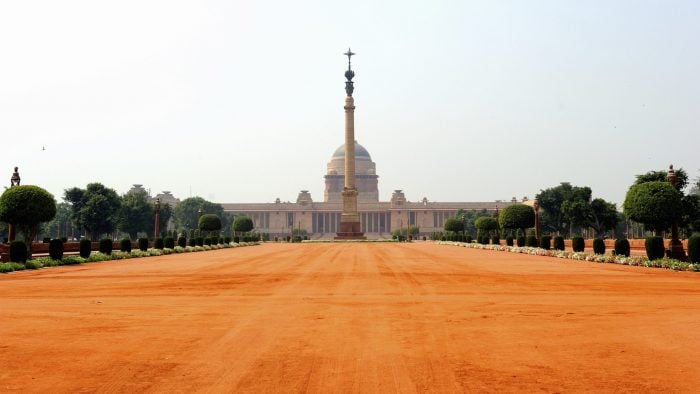
Explore New Delhi, an area within Delhi built as the seat of the British Indian government in the early twentieth century. Much of the design was by architect Edwins Lutyens, and thus it is referred to as Lutyens' Delhi, who invented his own order of classical architecture. There are grand buildings, such as Rashtrapati Bhavan (formerly known as Viceroy’s House), as well as the Lutyens Bungalow Zone, a green area of residential buildings that has the most expensive real estate in India and possibly the world. You’ll also see Humayun's Tomb, built in 1570 as the first garden-tomb on the Indian subcontinent.

You'll visit the Gurudwara Bangla Sahib, one of the most prominent Sikh houses of worship. Sikhs believe that everyone, regardless of their station in life, should do sevak, or service. This resulted in the langar, or community kitchen, where every member of the religion considers it an honour to come and put in a couple of hours cooking thousands of Indian breads and making huge vats of curry to feed local pilgrims and the under privileged. During your visit you'll have a go at making chapattis and lend some man power by stirring the huge pots of dal.

Located in the eastern part of Delhi, Humayun’s Tomb is one of the best preserved Mughal monuments. The tomb was built under the instruction of his widow, Hamida Banu Begum, who ordered the construction of a mausoleum for her deceased husband in 1565. The tomb is strongly influenced by Persian architecture and is sat in the center of a Persian-style chaharbagh garden, divided into four main parts to resemble the paradise garden described in the Quran. From the 17th to the 19th centuries the garden was gradually filled with the tombs of Humayun’s descendants and his entourage. Several Mughal emperors are even buried inside Humayun’s mausoleum.
Transfer
Private transfer to Agra with guide
Agra and the Taj Mahal
Accommodation in Agra and the Taj Mahal
Agra and the Taj Mahal
Highlights
- 102 rooms and suites
- Two restaurants
- Lounge
- Bar
- Fitness centre
- Spa
- Outdoor swimming pool
- Private dining options
- Kids' cooking classes
- Buggies to the Taj Mahal
Overview
Enjoy watching the colours of the marble change throughout the day, from its rosy glow in the morning light to the golden tint as the sun begins to set.
The hotel is approached via a driveway, lined with trees and lit with flaming torches at night. As you enter, step inside a Mughal-style quadrant with an arched passageway decorated with gold leaf frescoes, and cascading fountains.
Hallways leading to the rooms and suites are lined with wooden blinds with hand-printed golf motifs, the walls adorned with Mughal coins and antique Indian fabrics. The rooms themselves are full of old-world charm with hand woven rugs and intricately decorated wooden furniture. Each one offers uninterrupted views of the Taj Mahal with some of the suites featuring bathtubs that look out over the monument.
The Esphahan restaurant specialises in Indian food with traditional curries and fluffy breads served on burnished metal plates. Enjoy a cup of tea or coffee under the gold domed ceiling of the lounge or enjoy a drink and a game of backgammon in the bar.
The spa is centred around a domed marble steam room and offers a range of treatments inspired by ancient Indian rituals. There is also a fully-equipped gym that looks out over the hotel’s pristine gardens and an outdoor pool, which is partly covered so you can take refuge in the shade.
→ Find out moreAgra and the Taj Mahal
Overview
Just 3km (1.9 miles) from the centre of Agra and closer still to the iconic Taj Mahal, the ITC Mughal is an award-winning modern take on Mughal architecture set across 35 acres of lush gardens. 233 modern rooms and expansive suites overlook the landscaped lawns and sparkling lake waters.
Guests at the ITC Mughal are spoilt for choice when it comes to cuisine with fine dining at Taj Bano, authentic northwest Indian food at Peshawri and the more informal setting of the Mughal Pavilion.
A real highlight of the ITC Mughal is its Kaya Kalp spa, a vast complex dedicated to revitalising the mind, body and soul with luxuriously appointed spa suites, royal baths and a Mughal hammam.
As well as exploring the Taj Mahal, Agra Fort and other remnants from the Mughal Empire, there’s plenty to keep guests busy at the hotel with tennis, badminton, a nature trail and recreational lounge.
→ Find out more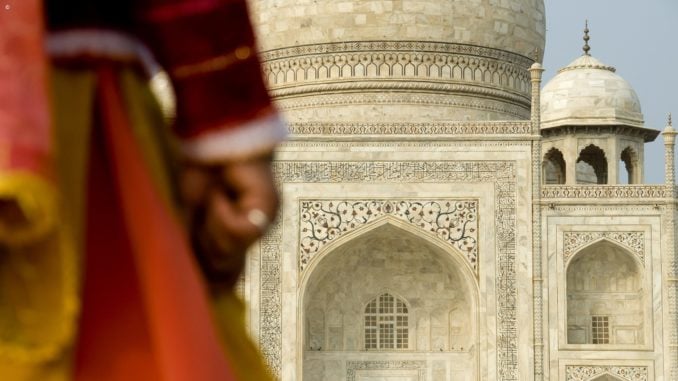
It has graced the pages of books for centuries but nothing quite prepares you for seeing the Taj Mahal for the very fist time. The ultimate symbol of eternal love, this is one of India's most memorable and emotive sights. The Taj Mahal sits on the banks of the holy Yamuna River within 42 acres of beautiful gardens. The domed mausoleum sits 52m above the river bank, surrounded by minarets on all four sides. It is flanked by a mosque and a guest house, both made from red sandstone and mirror images of each other. There is no denying that the Taj Mahal, one of the Seven Wonders of the World, is one of the main reasons people visit Agra. However, it’s well worth lingering to explore the city’s magnificent fort that lies just 3km to the west.

Just a few kilometres from the Taj Mahal sits the impressive Agra Fort, where the Mughal Emperor Shah Jehan was imprisoned by his son. Here you will see the art and crafting of the white marble that has made the area so famous, the Pearl Mosque and the Halls of Public and Private Audience.

This walking tour provides a fascinating insight into traditional life in the rural village of Kachpura that overlooks the Taj Mahal from the opposite bank of the Yamuna River. The 1.5km walk is a part of a community development programme which seeks to build sustainable livelihoods for youth and women from low resource communities. Local people are trained as tour guides and will lead you on the walk. This area of Agra is home to a number of ancient Mughal monuments including the Gyarah Sidi and Humayun’s mosque, and you will have ample time to explore these sights as well as interact with the local people in the village. The walk ends at Mehtab Bagh from where there are stunning views of the Taj Mahal standing majestically across the river.

As the light changes, so too does the colour of the Taj Mahal. One of the best times to visit is in the early hours when it is bathed in the ethereal glow of the morning light.
Transfer
Private transfer to Ranthambore National Park with guide
Ranthambore National Park
Accommodation in Ranthambore National Park
Ranthambore
Highlights
- 12 luxurious canvas tents
- Organic herb and vegetable garden and farm
- Specialist photographic safaris
- Lively cooking classes and demonstrations
- Private evenings under the stars
Overview
Owned and run by a family who have played an active part in Ranthambore’s conservation efforts for over four decades, Sher Bagh is a luxurious camp that blends pioneering sustainability with an opulent style redolent of grand British Raj-era safaris.
Authentic and intimate, there are just 12 hand–stitched canvas tents pitched under a canopy of indigenous trees, each furnished with teak campaign-style furniture with en–suite stone bathrooms and wonderfully comfortable beds.
The exquisite Burra Sahib suite is set in a generous private space with its own swimming pool and unobstructed views of the reserve, while the Pukka Sahib suite has a walled garden surrounding a Jacuzzi and open-air shower. Both come with a private butler attending to your every need.
Thoughtfully designed menus combine Anglo–Indian and European lunches, with traditional Indian dinners cooked in outdoor clay ovens, all made with home-grown ingredients, handpicked from the organic herb and vegetable garden and the Sher Bagh farm. The culinary arts are central to life at the camp and guests are invited to participate in and learn from live cooking demonstrations. Meals can also be served in more secluded areas of the camp for those looking to spend a private evening under the stars.
Wildlife experiences here include expertly guided safaris inside the national park to spot tigers, leopards, sloth bears and more. For those with specialist interests, birding walks are on offer as well as safaris accompanied by an expert photographer.
There are also tours to Ranthambore Fort and visits to meet local craftswomen from Dastkar Ranthambhore, a non–profit organisation that produces a wide range of colourful handicrafts. And, of course, one can opt to indulge in a range of treatments and therapies at the Sher Bagh Jungle Sp
→ Find out more
The impact of your stay:
- Recognising the critical importance of Ranthambore National Park and the imperative for tiger conservation, the camp actively contributes to the cause. Over the past years, SUJÁN Sher Bagh has made a significant financial contribution of USD $ 2.197,777 million to Ranthambore National Park, solely through gate receipts. This substantial support underscores the camp’s commitment to wildlife conservation, making it a model for responsible and impactful travel.
- SUJÁN has adopted several schools across Rajasthan, where they play a crucial role in providing additional teaching staff to address shortages in qualified manpower. By fostering environmental education and improving sanitation facilities, the group contributes to the overall well-being and sustainable development of the regions it serves.

Located in the southeastern corner of Rajasthan, Ranthambore National Park is perhaps the most famous place to spot wild tigers in India - and for good reason. You'll drive through the park in search of these beautiful and awe inspiring creatures with an expert guide who knows the park and its big cats like the back of their hand. As well as being a top tiger spotting destination, Ranthambore is a beautiful park to explore with the 10th-century fort towering over the surrounding plain, its crenellations now sun loungers for Hanuman langurs looking down onto the lakes below. The rest of the park’s jungle is littered with ancient temple ruins, often a favoured rest stop for wandering tigers.
Transfer
Private transfer to the Kukas region with guide
Dera Amer Camp

Check in to your tent at Dera Amer, where a local family has rescued elephants from carrying tourists to and from Amber Fort. The beautiful and majestic Indian elephants are a joy to be around, and you will spend time bathing them and then painting them in the local Jaipuri style.

Enjoy a walk through the Aravalli Hills where you will visit meena tribal settlements, a ruined fort and hidden shrines. This walk takes you off the beaten track to sites seldom visited by tourists and you will have the opportunity to talk with the local people for an insight into their culture.

Amber, the ancient capital of the region, still recalls its heydays in the majestic ramparts rising steeply along the contoured hillsides. It is an extremely well preserved building and during your guided tour you'll visit the Jagmandir, or Hall of Victory, with its glittering mirrors, the Jai Mahal and Temple of Kali.
Transfer
Private transfer to your hotel in Jaipur with guide
Jaipur
Accommodation in Jaipur
Jaipur
Overview
Once the city house for the rulers of Samode, one of Rajasthan’s wealthiest towns, Samode Haveli has been converted into a luxury hotel that still has all the lavish touches of a royal residence.
Rooms and suites are scattered around a series of courtyards and gardens, each individually designed and reflecting the rich history and culture of the region. Tiled floors, antique furniture and furnishings upholstered in beautiful Indian fabric give them plenty of character. Some of the suites come with elegant arches, alcoves and pillars and the elaborate Sheesh Mahal suite is covered in floor-to-ceiling mosaics.
The wonderfully elaborate dining room is covered in hand-painted murals and lit by huge crystal chandeliers. Guests can also indulge in a decadent afternoon tea in the verandah lounge or enjoy a cocktail under the shade of the poolside cabanas.
Choose to relax in the Jacuzzi, steam room and spa or simply relax take a seat in the verdant gardens. You’re also ideally situated to explore the vibrant city of Jaipur with its myriad of architectural wonders and bustling markets.
→ Find out moreJaipur
Overview
A royal residence dating back to 1835, the splendid Rambagh Palace, within its 47 acres of grounds at the heart of the city, is one of Rajasthan’s finest heritage hotels.
Grand and intricate examples of Jaipur’s craftsmanship abound with hand-carved stone and marble latticework, fine antiques and elaborate Mughal gardens, all adding up to a thoroughly regal feel.
This carries on into the 45 spacious rooms, with their period décor and modern amenities, and is amplified by an order of magnitude in the 23 grand suites.
Enjoy an aptly royal India feast in the French-style ballroom of Suvarna Mahal, or opt for something a little more informal at the Rajput Room or with tea on the lawn. Drink among hard-won trophies at the sophisticated Polo Bar, or beside a restored locomotive at Steam.
After a day exploring Jaipur, head back to the Jiva Grande Spa for traditional and signature treatments, lounge by the pool, try your hand at croquet or perhaps learn about the Rambagh Palace’s own fascinating history with a guided tour of the grounds.
→ Find out moreJaipur
Overview
Located well away from bustling Jaipur, The Oberoi Rajvilas is a sprawling fort-like retreat with some 32 acres of incredible gardens full of verdant trees, fragrant flowers and strutting peacocks.
Revived local techniques were used to recreate vernacular pink lime walls, grand Mughal arches, gold leaf frescoes, high domed ceilings and magnificent crystal chandeliers, giving the whole place an unmistakably palatial feel.
There are 71 rooms, luxury tents and private villas spread around the resort, many laid out in small clusters ideal for families or small groups wishing to stay near one another.
A serene 18th-century Shiva temple hosts Hindu blessings, meditation and morning yoga classes and a mansion of similar vintage is now the indulgent Oberoi Spa. The resort also boasts a fully-equipped fitness suite, putting green, two floodlit tennis courts, a croquet lawn and an outdoor pool.
Both restaurants have indoor and outdoor dining areas. The Surya Mahal is open throughout the year and has an extensive menu of world cuisine. Raj Mahal is open during the cooler months of October to April and serves rarely found Indian delicacies. Private dining can also be arranged.
→ Find out moreJaipur
Highlights
- 13 rooms and suites including two spectacular Royal Apartments
- Art Deco-style swimming pool
- The Polo Lounge bar
- Two decadent in-house restaurants
- A spacious and relaxing spa retreat
- Situated in the heart of the Pink City
Overview
Built in 1729 as a private rural retreat for the Maharaja of Jaipur’s wife, the RAAS Rajmahal Palace has remained an opulent oasis even as the city has grown around it.
Still owned by the royal family of Jaipur, in the halcyon days of the British Raj it embodied the glamour of ‘Jaipur Life’. As the preferred private residence of Maharaja Sawai Man Singh II, the dashing polo player, the likes of Queen Elizabeth II, The Duke of Edinburgh, Jackie Kennedy and the Shah of Iran were entertained within its great walled gardens.
Today, it has been meticulously and daringly restored by designer Adil Ahmad, with grand chandeliered rooms embellished with intricate thematic wallpapers and luxurious fabrics.
With an initial 14 royal apartments, suites and palace rooms, ranging from palatial to genuinely royal – one room built specifically for Queen Elizabeth II’s state visit in 1961 – service is both personal and accomplished.
Down the marble staircase, choose to lounge around the art deco pool or treat yourself at the spa. There are three dining options; the relaxed Colonnade, vibrant 51 Shades of Pink, and formal traditional dining at The Orient Occident. The Polo Bar celebrates the talents of Jaipur’s sporting tradition and afternoon tea on the lawn is a must.
If you can bring yourself to venture outside the Rajmahal’s walls, you’ll find Jaipur’s famed forts, palaces and local markets just minutes away, and tailor made culinary, historical and photographic walking tours can be arranged.
→ Find out more
The capital of Rajasthan and its largest city, Jaipur is at once the state’s commercial hub and one of its most fascinating cultural destinations. The pace of life here is fast, but take your time and in this somewhat frantic city you'll find some of India’s most majestic palaces and atmospheric relics.

Sanganer is the centre of the famous block printing and dying industry, and owes its success to a rivulet whose water has a mineral content that fixes dyes. Here you will learn the skills and techniques used to create these beautiful prints and under the watchful eye of a master you will print onto your piece of chosen fabric, which will then be tailored into a garment to be delivered at a later date.

This is a unique way to explore day-to-day life inside the walls of the pink city. Experience the religious life of local communities by visiting lively old temples and witnessing a Hindu prayer ceremony. You'll have the opportunity to pop into the beautifully decorated havelis and interact with the residents.
This walk is also a great way to explore Jaipur’s architecture. As you wander through the old city, you'll see an amazing variety of historic landmarks and buildings.
Each one tells a fascinating story about the person who built it and the historic events associated with it.
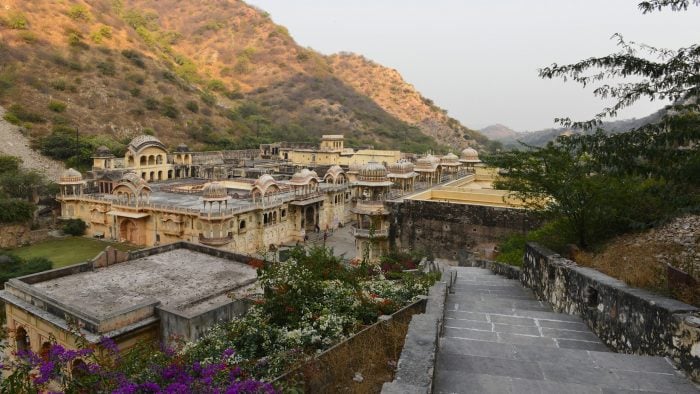
Galta Ji is a large Hindu temple complex that lies 10km to the east of Jaipur. The site consists of a series of temples built in to a narrow crevice in the ring of hills that surround Jaipur. A natural spring flows down filling a series of sacred water tanks, known as kunds. The galta kund is believed to be the holiest of them all, and it is said it never dries out. Galta Ji is also famous for its monkeys who come to bathe in the waters and play on the temples. You'll then visit Gaitor which contains the stately marble mausoleums of Jaipur’s royal family.

Along with Amer Fort and Jaigarh Fort, Nahargarh once formed a strong defense ring around the city. The fort was originally named Sudarshangarh, but it became known as Nahargarh, which means 'abode of tigers'. Nahargarh Fort stands on the edge of the Aravalli Hills and offers wonderful views across the city. It is at its best at sunset when the light falls over Jaipur.
Transfer
Private transfer to Jaipur airport with guide
We design private journeys for people who wish to go beyond the typical and experiencing something truly special. Our amazing team of travel designers, concierges and local guides work together to create unique journeys that get deep under the skin of where you’re visiting.
Get in touch
A Family Adventure in India
How we work
With its colourful markets, vibrant cities and amazing wildlife, India is the perfect destination for an unforgettable family adventure. You’ll be taken care of every step of the way with your own expert guide who will accompany you from the minute you step off the plane until the very end of your trip. You’ll start by exploring Delhi, India’s vast and fascinating capital. Wind your way through its bustling streets, past rickshaws, bicycles and cows on privately guided tours that offer an insight into the local culture and day-to-day life in the city. You’ll also visit the Gurudwara Bangla Sahib Sikh temple where you’ll have fun making chapattis and stirring the huge pots of dal in the community kitchen. It’s then on to Agra, home to the beautiful Taj Mahal. You’ll visit the iconic marble mausoleum at sunrise when it is looking its most magical, illuminated by the soft morning light. You’ll also get to explore the surrounding area with a village walk, a wonderful opportunity to get a glimpse into life in rural India. From Agra you’ll make tracks to Ranthambore in search of its majestic tigers. Driving through the park with your expert guide, all sets of eyes will be on stalks as you look out for pawprints in the ground and flashes of orange between the trees. There are also plenty of sprightly deer, colourful birds and mischievous monkeys to keep you entertained along the way. After a day of exploring, your luxury safari lodge is the perfect place for some quality time together and family dinners under the stars. The next wildlife encounter is a night at Dera Amer elephant camp where you’ll spend time in the company of these gentle giants. There’s more of the countryside to be explored with a walk through the Aravalli Hills and a visit to the magnificent Amber Fort before you make you way to Jaipur, the final stop. The capital of Rajasthan, Jaipur is a city full of energy and there’s lots of fun to be had with a block printing workshop and a visit to the Galta Ji temples, frequented by tribes of monkeys who come to splash in the water pools. On your final night you’ll visit Nahargarh Fort and gaze out across the city as the sun sinks behind the horizon. | Whats included?
|
Days 1-3 |
Delhi |
|
Flights & transfers
Airport assistance at Delhi Airport |
|
| Private transfer to your hotel with guide | |
|
Accommodation in Delhi
•
The Lodhi - $$$$$
With its clean lines, crisp decor and modern take on Moghul architecture, The Lodhi is a cool...
•
The Imperial - $$$$$
A driveway lined with tall palm trees leads to the grand white facade of The Imperial, one of...
|
|
| Two nights in Delhi With a population of over 18 million, Delhi is an international metropolis. Perhaps daunting at first sight, a little exploring soon reveals a rich, diverse and fascinating culture. Throughout most of its history, it has served as the capital of various kingdoms and empires, captured and rebuilt time and time again. Every dynasty left its mark and as you start to explore, you’ll discover reminders and relics from this colossal game of pass the parcel.
|
|
| Old Delhi tour In complete contrast to the new city, the old city is a labyrinthine maze of lanes overhung by a tangled mass of electric wires. Within this chaos lies a semblance of order – each lane in this area is dedicated to a particular item, rather like a department store. There are lanes selling bangles, grocers, items used in weddings, silverware, clothes, spices and shoes. Sharing the same space are vendors with carts selling a variety of items, street side dentists, natural healers and cobblers. The old city has space for all professions. You will explore the old city in cycle rickshaws and will also walk along some of the more interesting alleys. |
|
| New Delhi tour Explore New Delhi, an area within Delhi built as the seat of the British Indian government in the early twentieth century. Much of the design was by architect Edwins Lutyens, and thus it is referred to as Lutyens' Delhi, who invented his own order of classical architecture. There are grand buildings, such as Rashtrapati Bhavan (formerly known as Viceroy’s House), as well as the Lutyens Bungalow Zone, a green area of residential buildings that has the most expensive real estate in India and possibly the world. You’ll also see Humayun's Tomb, built in 1570 as the first garden-tomb on the Indian subcontinent. |
|
| Visit the Gurudwara Bangla Sahib Sikh temple You'll visit the Gurudwara Bangla Sahib, one of the most prominent Sikh houses of worship. Sikhs believe that everyone, regardless of their station in life, should do sevak, or service. This resulted in the langar, or community kitchen, where every member of the religion considers it an honour to come and put in a couple of hours cooking thousands of Indian breads and making huge vats of curry to feed local pilgrims and the under privileged. During your visit you'll have a go at making chapattis and lend some man power by stirring the huge pots of dal. |
|
| Tour of Humayun's Tomb Located in the eastern part of Delhi, Humayun’s Tomb is one of the best preserved Mughal monuments. The tomb was built under the instruction of his widow, Hamida Banu Begum, who ordered the construction of a mausoleum for her deceased husband in 1565. The tomb is strongly influenced by Persian architecture and is sat in the center of a Persian-style chaharbagh garden, divided into four main parts to resemble the paradise garden described in the Quran. From the 17th to the 19th centuries the garden was gradually filled with the tombs of Humayun’s descendants and his entourage. Several Mughal emperors are even buried inside Humayun’s mausoleum. |
|
|
Flights & transfers
Private transfer to Agra with guide |
|
Days 3-4 |
Agra and the Taj Mahal |
|
Accommodation in Agra and the Taj Mahal
•
The Oberoi Amarvilas - $$$$$
Just 600m from the magnificent Taj Mahal, The Oberoi Amarvilas allows guests to appreciate the...
•
ITC Mughal - $$$$$
Just 3km (1.9 miles) from the centre of Agra and closer still to the iconic Taj Mahal, the ITC...
|
|
| One night in Agra It has graced the pages of books for centuries but nothing quite prepares you for seeing the Taj Mahal for the very fist time. The ultimate symbol of eternal love, this is one of India's most memorable and emotive sights. The Taj Mahal sits on the banks of the holy Yamuna River within 42 acres of beautiful gardens. The domed mausoleum sits 52m above the river bank, surrounded by minarets on all four sides. It is flanked by a mosque and a guest house, both made from red sandstone and mirror images of each other. There is no denying that the Taj Mahal, one of the Seven Wonders of the World, is one of the main reasons people visit Agra. However, it’s well worth lingering to explore the city’s magnificent fort that lies just 3km to the west. |
|
| Tour of Agra Fort Just a few kilometres from the Taj Mahal sits the impressive Agra Fort, where the Mughal Emperor Shah Jehan was imprisoned by his son. Here you will see the art and crafting of the white marble that has made the area so famous, the Pearl Mosque and the Halls of Public and Private Audience. |
|
| Kachpura village walking tour This walking tour provides a fascinating insight into traditional life in the rural village of Kachpura that overlooks the Taj Mahal from the opposite bank of the Yamuna River. The 1.5km walk is a part of a community development programme which seeks to build sustainable livelihoods for youth and women from low resource communities. Local people are trained as tour guides and will lead you on the walk. This area of Agra is home to a number of ancient Mughal monuments including the Gyarah Sidi and Humayun’s mosque, and you will have ample time to explore these sights as well as interact with the local people in the village. The walk ends at Mehtab Bagh from where there are stunning views of the Taj Mahal standing majestically across the river. |
|
| Sunrise visit to the Taj Mahal As the light changes, so too does the colour of the Taj Mahal. One of the best times to visit is in the early hours when it is bathed in the ethereal glow of the morning light. |
|
|
Flights & transfers
Private transfer to Ranthambore National Park with guide |
|
Days 4-6 |
Ranthambore National Park |
|
Accommodation in Ranthambore National Park
•
SUJÁN Sher Bagh - $$$$$
Owned and run by a family who have played an active part in Ranthambore’s conservation...
|
|
| Tiger safari in Ranthambore National Park Located in the southeastern corner of Rajasthan, Ranthambore National Park is perhaps the most famous place to spot wild tigers in India - and for good reason. You'll drive through the park in search of these beautiful and awe inspiring creatures with an expert guide who knows the park and its big cats like the back of their hand. As well as being a top tiger spotting destination, Ranthambore is a beautiful park to explore with the 10th-century fort towering over the surrounding plain, its crenellations now sun loungers for Hanuman langurs looking down onto the lakes below. The rest of the park’s jungle is littered with ancient temple ruins, often a favoured rest stop for wandering tigers. |
|
|
Flights & transfers
Private transfer to the Kukas region with guide |
|
Days 6-7 |
Dera Amer Camp |
| One night at Dera Amer Check in to your tent at Dera Amer, where a local family has rescued elephants from carrying tourists to and from Amber Fort. The beautiful and majestic Indian elephants are a joy to be around, and you will spend time bathing them and then painting them in the local Jaipuri style. |
|
| Walking tour through the Aravalli Hills Enjoy a walk through the Aravalli Hills where you will visit meena tribal settlements, a ruined fort and hidden shrines. This walk takes you off the beaten track to sites seldom visited by tourists and you will have the opportunity to talk with the local people for an insight into their culture. |
|
| Tour of Amber Fort Amber, the ancient capital of the region, still recalls its heydays in the majestic ramparts rising steeply along the contoured hillsides. It is an extremely well preserved building and during your guided tour you'll visit the Jagmandir, or Hall of Victory, with its glittering mirrors, the Jai Mahal and Temple of Kali. |
|
|
Flights & transfers
Private transfer to your hotel in Jaipur with guide |
|
Days 7-10 |
Jaipur |
|
Accommodation in Jaipur
•
Samode Haveli - $$$$$
Once the city house for the rulers of Samode, one of Rajasthan’s wealthiest towns,...
•
Taj Rambagh Palace - $$$$$
A royal residence dating back to 1835, the splendid Rambagh Palace, within its 47 acres of...
•
The Oberoi Rajvilas - $$$$$
Located well away from bustling Jaipur, The Oberoi Rajvilas is a sprawling fort-like retreat...
•
RAAS Rajmahal Palace - $$$$$
Built in 1729 as a private rural retreat for the Maharaja of Jaipur’s wife, the RAAS...
|
|
| Three nights in Jaipur The capital of Rajasthan and its largest city, Jaipur is at once the state’s commercial hub and one of its most fascinating cultural destinations. The pace of life here is fast, but take your time and in this somewhat frantic city you'll find some of India’s most majestic palaces and atmospheric relics. |
|
| Block printing workshop Sanganer is the centre of the famous block printing and dying industry, and owes its success to a rivulet whose water has a mineral content that fixes dyes. Here you will learn the skills and techniques used to create these beautiful prints and under the watchful eye of a master you will print onto your piece of chosen fabric, which will then be tailored into a garment to be delivered at a later date. |
|
| Day-to-day life in Jaipur's walled city This is a unique way to explore day-to-day life inside the walls of the pink city. Experience the religious life of local communities by visiting lively old temples and witnessing a Hindu prayer ceremony. You'll have the opportunity to pop into the beautifully decorated havelis and interact with the residents.
|
|
| Visit Galta Ji temples and Gaitor Galta Ji is a large Hindu temple complex that lies 10km to the east of Jaipur. The site consists of a series of temples built in to a narrow crevice in the ring of hills that surround Jaipur. A natural spring flows down filling a series of sacred water tanks, known as kunds. The galta kund is believed to be the holiest of them all, and it is said it never dries out. Galta Ji is also famous for its monkeys who come to bathe in the waters and play on the temples. You'll then visit Gaitor which contains the stately marble mausoleums of Jaipur’s royal family. |
|
| Visit Nahargarh Fort Along with Amer Fort and Jaigarh Fort, Nahargarh once formed a strong defense ring around the city. The fort was originally named Sudarshangarh, but it became known as Nahargarh, which means 'abode of tigers'. Nahargarh Fort stands on the edge of the Aravalli Hills and offers wonderful views across the city. It is at its best at sunset when the light falls over Jaipur. |
|
|
Flights & transfers
Private transfer to Jaipur airport with guide |






































